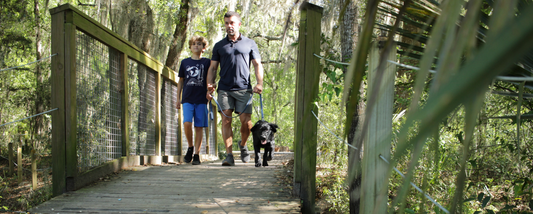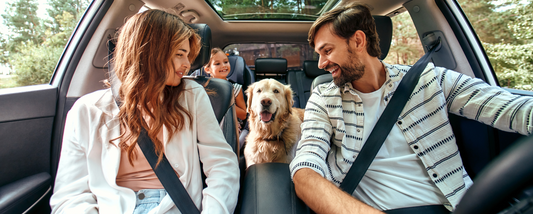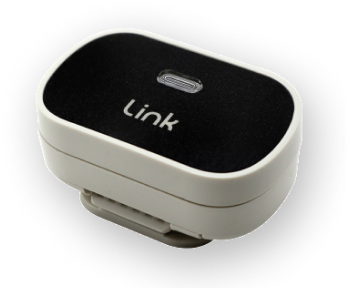Natural disasters like hurricanes, severe thunderstorms, flash flooding, tornadoes, wildfires and earthquakes are an unfortunate reality of summer. Most of these disasters give little to no warning, and they can leave you needing to evacuate your home or without electricity and safe drinking water.
Though you can’t always predict when a severe weather event will strike, you can start preparing now. It’s better to be safe than sorry, so we’ve compiled a list of everything you need to know to prepare your pup for a natural disaster – whether you’re going to evacuate or weather the storm.
Prepare an Evacuation Kit
Evacuations don’t often come with a lot of warning. Because of the changing course of hurricanes, sometimes hurricane evacuation announcements only allow a few hours to prepare. Wildfire evacuations can leave even less time as winds suddenly pick up and change the direction and intensity of the fire.
It’s best to get an evacuation kit ready now, so you can safely and quickly evacuate with your pets. Most pet parents would never dream of leaving their dog behind, but caught in the chaos of an evacuation without a plan can leave you searching for the right thing to do.
Gather all your supplies together now, and put them in an easy-to-grab spot. Keep all the supplies together in one place, like a backpack or travel bag. When it’s time to go, you’ll want to be able to grab everything you need quickly.
What to Include in an Evacuation Kit
Here’s a helpful list of what you need to have ready in your dog’s evacuation kit. Not every item is intuitive, so make sure to read through carefully. You can even print off this list and check each item off once you’ve got it ready to go:
- A crate or carrier: Sudden travel is stressful for a dog, so make sure you bring a crate or carrier that leaves enough room for your dog to stand, sit, and turn around in – even if your dog doesn’t usually use a crate. Many pet-friendly shelters will only allow dogs if they are crated. Be sure to label the carrier with all your contact information.
- Puppy pads: Even the most well-behaved, potty-trained dog can have an accident during stressful situations. And if you’re evacuating, you might not always be able to pull over and stop during an emergency.
- Medicine: Ask your vet for extra medicine for your evacuation kit. Make sure that you get non-refrigerated versions (where possible) that don’t expire within the next 3 months.
- Poop bags: Always pack more poop bags than you think you’ll need.
- Extra leash, collar, and tags: It’s better to be safe than sorry when it comes to identification, so make sure you have extra ID tags, collars, and a leash on hand.
- A picture of you and your pup: It might not seem obvious, but print out a picture of you and your pup and keep it in a waterproof bag. If your dog gets scared and runs away, you’ll want to have this picture handy.
- Familiar items: Whether it’s a few toys or a blanket, bring some of the comfort of home with you. Remember, dogs are all about smells, and those familiar smells of home can keep them calm.
- Dog first aid kit: In case of injury and limited access to an emergency vet, keep first aid supplies on hand. The ASPCA recommends: “cotton bandage rolls, bandage tape and scissors; antibiotic ointment; flea and tick prevention; latex gloves, isopropyl alcohol and saline solution [and] a pet first aid reference book.”
- Records and Documentation: Make copies of all vaccination and medical records; registration information including microchipping information; and any adoption papers. Place copies in a waterproof plastic bag to bring with you. Link users can also store digital copies of records and documents in the Link My Pet App under Profile > Vet Records for safekeeping and easy access.
- Food and Water: It’s a no-brainer, but make sure you have enough food and water on hand for your dog during an evacuation. If you’re going to a shelter, make sure you have enough food for 2 weeks. If you’re going to a hotel in another city unaffected by the storm, prepare three days of food for travel to that location.
- Bleach and water purifier tabs: If many people are evacuating and you’re stuck on the road without access to clean water, you can use water purifier tabs to purify any drinking water. In a crunch, you can also use 16 drops of regular household bleach per every gallon of water.
- “Pets Inside” Sticker: Place a “Pets Inside” stickers on your front door and window. When you evacuate, be sure to write “Evacuated With Pets” in permanent marker across the sticker. This will help search and rescue teams in the event they are needed.
- A fully-charged Link My Pet GPS & Health Tracker: With Link, you know you always have your pet's GPS location, pertinent health information, and exercise tracking right in the palm of your hand. In an emergency, you'll want to know that you can track your dog's precise location in uncertain conditions and unfamiliar places.
Finally, make sure you have an evacuation plan ready. Know exactly where you’re going to go during the event of an evacuation. If you’re going to a shelter, check ahead to make sure they will accept pets. If you’re going to a hotel, also make sure you can bring your dog with you.
Prepare a Lights Out Kit
If you’re ever stuck at home during a severe storm or weather event without any electricity, you’ll want an easy-to-access kit on hand. You should prepare this kit for your entire family, but don’t forget to also prepare a kit for your dog.
Don’t use the supplies from your evacuation kit. Instead, prepare an entirely separate kit to weather the storm in. The dangers and risks posed with evacuating are different than those posed by staying at home without electricity.
- Food and water for two weeks: You never know how long it is going to take utility workers to get the power on during a severe weather event. Over-prepare, so you won’t be stuck when the worst happens.
- Puppy pads: If the weather is bad enough, your dog might need to stay inside longer than usual. Keep puppy pads on hand.
- Medicine: Just like with an evacuation kit, you’ll want to have a non-refrigerated version of your dog’s medicine on hand.
- Dog first aid kit: Staying at home during a severe storm presents a bigger risk for injury, so definitely make sure you keep a puppy first aid kit around. Look at the list above for details on what to include.
- Records and Documentation: Make more copies of all the records you have in your evacuation kit and keep them in a waterproof bag. In the event of a major catastrophe, you’ll want to have easy access to these. Link users can also store digital copies of records and documents in the Link My Pet App under Profile > Vet Records for safekeeping and easy access.
- "Pets Inside” Sticker: In the event something happens to you, make sure search and rescue workers know that you have pets inside your home. Place “Pets Inside” stickers on your front door and window.





